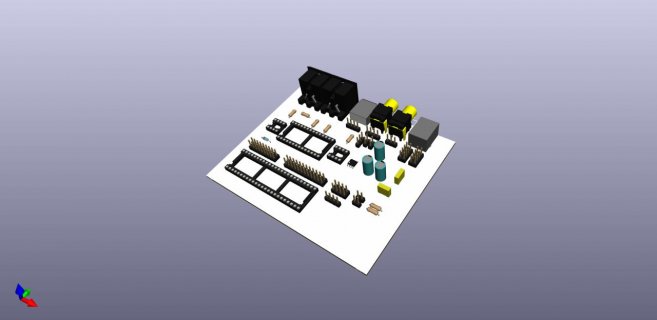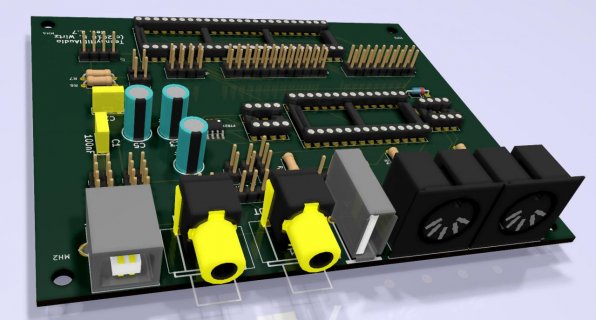## Description
This PCB is a summary of several circuits for the Teensy. It adds the following features to one board:
MIDI I/O with DIN connectors
Audio I/O with the Teensy-Audio-Board
alternative solution: Audio output with the PT8211
headers for analog and digital I/O (for all pins which are not used for the above features), e.g. for connecting rotary encoders, potentiometers, switches, …
headers for 3.3V, 5V and GND
connector and header for USB host (only Teensy-3.6, e.g. using as MIDI port)
connectors for audio output (and input when using Teensy-Audio-Board)
USB-B connector for supplying power
I2C header with pullup resistors (which can be disabled)
You need not equip all parts if you don’t want to use all the features.
## Idea behind
This is my first creation of a complex board and my first time using KICAD (http://kicad-pcb.org/). I created this PCB for having a flexible microcontroller-synth-plattform. The first implementation for this is a port of the DX-7 emulation of Dexed called MicroDexed (https://about.teahub.io/dcoredump/MicroDexed). First I used a stripe board as a prototype and stackable connectors for the Teensy-3.6 and the Teensy-Audio-Board. After trying around I found out that a simple LCD display and an encoder would be helful to change banks and sounds. So I decided to create a better plattform for this and created a flexible PCB.
The same PCB should make availabe a cheap and simple or more complex contruction on top of the same hardware base. So you have the option to simply use the PT8211 (with only audio outputs) and the onboard USB-MIDI as base for a synth or a full armed version with DIN-MIDI, encoders, LCD display and Audio input and output.
You can build MIDI playable synths, effects or just sound generators - it’s your part to decide what to do. For this the Teensy is really a very good platform. You can use the Arduino-IDE and several very good libraries especially for the audio stacks. Also there are many third party libraries for nearly every hardware which exists - or you can decide to write your own library.
Sources used
Teensy-Audio-Board: https://www.pjrc.com/store/teensy3_audio.html
PT8211 circuit: https://www.pjrc.com/store/pt8211_kit.html
Teensy MIDI circuit: https://www.pjrc.com/teensy/td_libs_MIDI.html
Creating sound/effect stacks: https://www.pjrc.com/teensy/gui/
## Thanks
A big thanks for all who made Teensy and the software around working. Especially the guys from the forum, which are very helpful and have patience with persons who start with hardware and microcontroller business.
Also a big thanks for the KICAD guys - this software is really awesome.
And not to forget the Arduino guys - IMHO they are some of the founders of the idea of making “things” with microcontrollrs easier.
And, of course all Open-Source developers who let us take part of their work by opening their code as free software.



